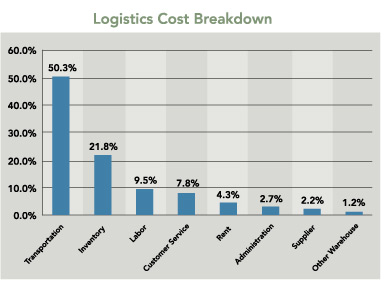Inbound-Outbound Logistics Cost Determines Location Decisions
The majority of respondents to Area Development's 24th Annual Corporate Survey said inbound-outbound shipping costs were important to selecting a site. Consider these factors before your next move.
June/July 10

Future implications of inbound-outbound shipping costs on distribution networks should concern corporate managers. The volatility of fuel costs, accessibility of other modes of transportation, and major legislation currently being debated have given corporate managers a new list of worries. But building a robust distribution network can alleviate future problems.
Project Announcements
Hut 8 Plans West Feliciana, Louisiana, Data Center Operations
12/24/2025
Coley Home Expands Claremont, North Carolina, Manufacturing Operations
12/24/2025
South Korea-Based ALUKO Group Plans Halls, Tennessee, Aluminum Manufacturing Operations
12/24/2025
Hoffman & Hoffman Expands Greensboro, North Carolina, Headquarters Operations
12/24/2025
Fenner Precision Polymers Plans Gaffney, South Carolina, Manufacturing Operations
12/24/2025
Mission Critical Interior Solutions Plans Springfield, South Carolina, Manufacturing Operations
12/24/2025
Most Read
-
The Workforce Bottleneck in America’s Manufacturing Revival
Q4 2025
-
Rethinking Local Governments Through Consolidation and Choice
Q3 2025
-
Lead with Facts, Land the Deal
Q3 2025
-
Investors Seek Shelter in Food-Focused Real Estate
Q3 2025
-
Tariff Shockwaves Hit the Industrial Sector
Q4 2025
-
America’s Aerospace Reboot
Q3 2025
-
The Permit Puzzle and the Path to Groundbreaking
Q3 2025

